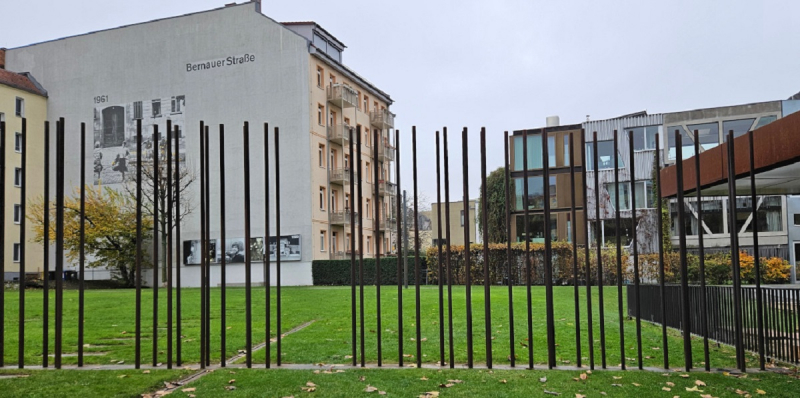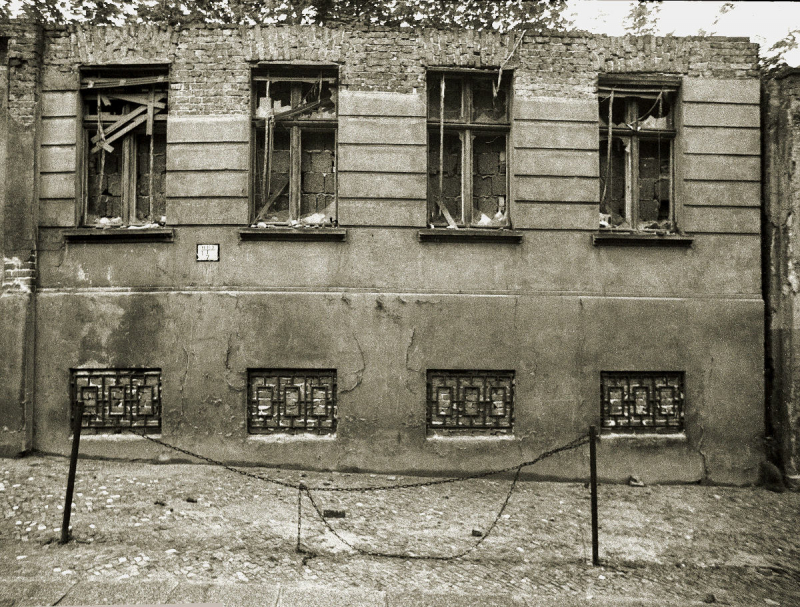Border House Bernauer Strasse 10a
Picture comparison
The site of the former border house at Bernauer Strasse 11 - 1976 and today. © Stiftung Berliner Mauer, Foto: Martin van der Veer
You are now standing in the foundations of Bernauer Strasse 10a. There used to be buildings standing here on Bernauer Strasse. The border between West and East Berlin ran right in front of them. The buildings stood in East Berlin, but the sidewalk outside the front doors belonged to West Berlin.
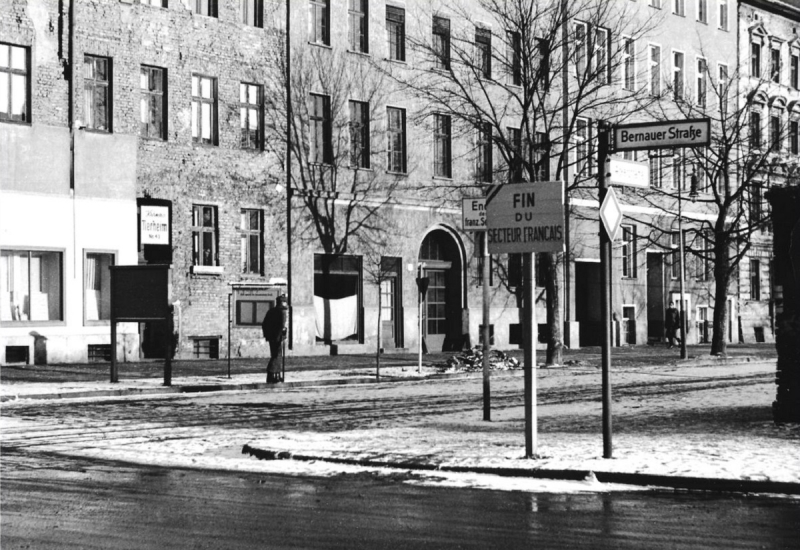
The intersection of Bernauer Straße and Ackerstraße before the Wall was built in 1958. © ELAB, Archiv der Versöhnungsgemeinde, Foto: privat
Life on Bernauer Strasse changed abruptly when the Wall was built on August 13, 1961. The residents of the border houses were no longer allowed to exit their buildings through the front door. Families, friends and neighbors were separated. The front doors were nailed shut or walled up and the entrances to the buildings were moved to the back.

Jörg Hildebrandt (* July 17, 1939) came to Berlin in 1950 with his family to Bernauer Strasse 4. On the day the Wall was built, he was at the newspaper kiosk at 6:30 in the morning and noticed the crowds of people and the barrier measures. He was forcibly relocated in the fall of 1961. His future wife Regine Hildebrandt (née Radischewski) also lived in Bernauer Strasse at the time.
The buildings on Bernauer Strasse provided a good opportunity to escape. Many people decided to flee. They climbed out of first-floor windows, slid down a rope or jumped from windows and rooftops. In the first weeks after the Wall was built, West Berlin firemen tried to help people escape by catching them in rescue nets.
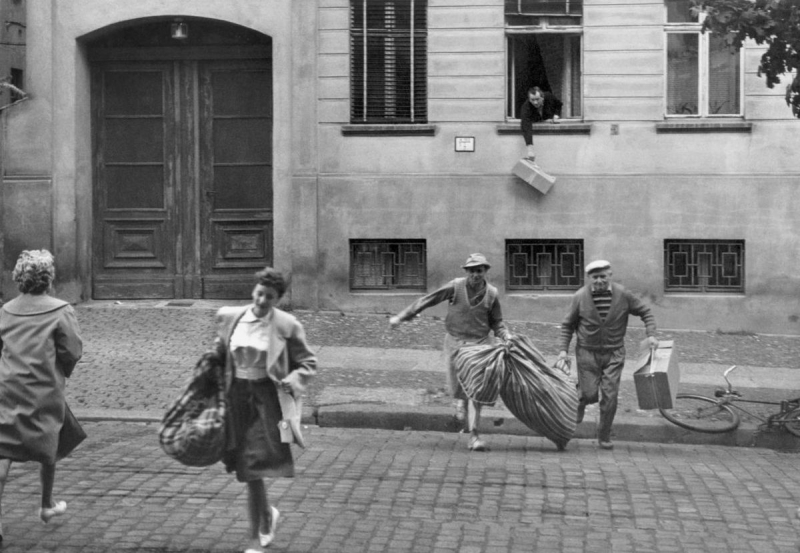
Escape of the Mathern family on August 17, 1961 in Bernauer Strasse. © Landesarchiv Berlin, Horst Siegmann
By October 1961, the residents who had stayed behind were forced to move out of their apartments and the buildings were later demolished. By the mid-1960s, only the bottom section of the buildings was left standing. These building facades dominated the image of Bernauer Strasse until 1980. But they too were eventually demolished and replaced by the new border wall.
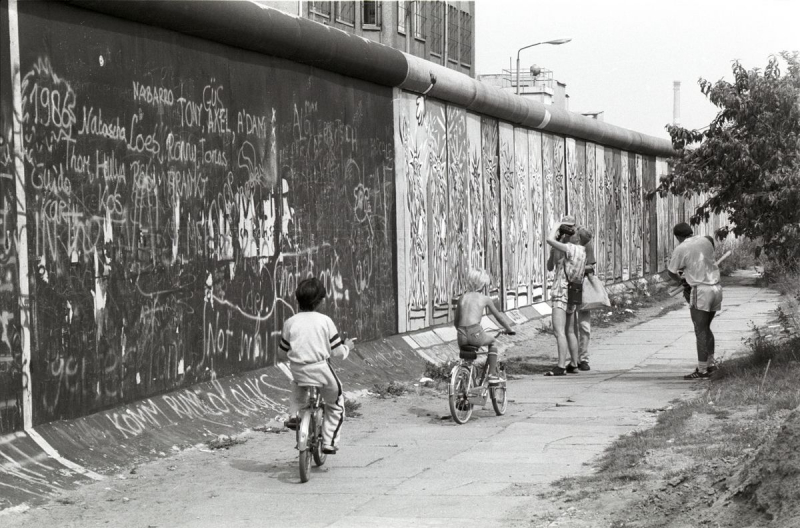
Children in West Berlin playing by the Wall. © ELAB, Archiv der Versöhnungsgemeinde
For people in West Berlin, living close to the Berlin Wall became unattractive after 1961. Districts such as Wedding and Kreuzberg, which were located next to the Wall, evolved into fringe districts. Anyone who could move away did so. There were many vacant apartments and people who could not find housing elsewhere moved to the areas near the Wall. In the 1960s, this was mostly people who had come to West Berlin from Turkey to work. Thus, living near the Wall became a part of everyday life for a large swath of West Berlin’s Turkish community.
The Reconciliation Church in the former border strip
In 1985, when the border grounds were being expanded, the East German government ordered the demolition of the Reconciliation Church. The cross from the church tower that lies in the field of rye to the right of the Chapel of Reconciliation serves as a reminder of this. It flew off the top of the church tower during the blast and was bent out of shape by the force of the impact.
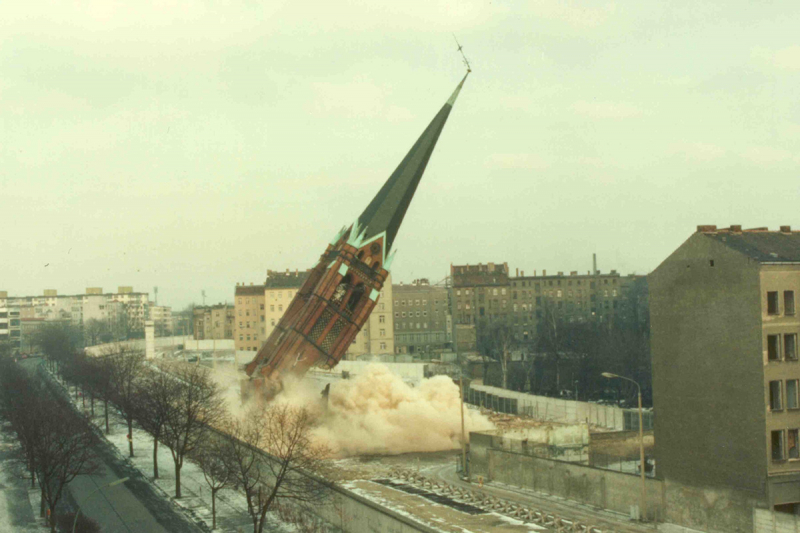
Demolition of the steeple of the Church of Reconciliation on January 28, 1985. © Ev. Medienzentrale Berlin-Brandenburg
After the Wall was erected, the Reconciliation Church was situated in the border strip and inaccessible to its parishioners from East and West Berlin. Today, the Chapel of Reconciliation, built in the years after the Wall fell, stands on the site of the original church. The chapel serves as a place of remembrance and prayer for parishioners and visitors to the memorial.

Today, the cross of the Church of Reconciliation can be found next to the Chapel of Reconciliation in the Rye Field. © Stiftung Berliner Mauer
